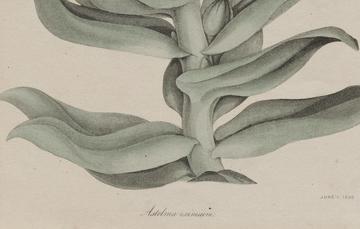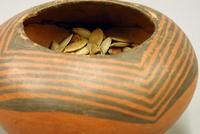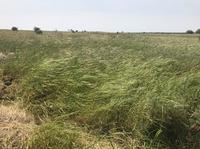Environmental Archaeology Stream

The Environmental Archaeology stream explores the role of environmental archaeology in the understanding of past human societies.
Recovery of evidence of biological remains and their soil matrix is nowadays typically a key part of archaeological investigation, both on- and off-site. Critical evaluation of the possibilities and limitations of the evidence recovered is important for the subject to play its full role in the analysis and interpretation of human activity in relationship to the environment.
The history of the discipline is considered as a basis of its development into a core aspect of present-day archaeology. Focus is given to both the methods used to study the interplay between past economies and environments and the theoretical framework that interpretation requires.
Topics covered:
- Preservation & recovery of bio-archaeological material
- Identification & quantification of bio-archaeological material
- Bio-molecular approaches
- Ecology of past societies
- Theoretical issues in environmental archaeology including niche construction and environmental determinism
- Climate change and human activity
- Food production and consumption
- Land use and environmental impacts
The stream combines lectures, tutorials and laboratory based practicals to introduce students to a broad range of bio-archaeological approaches [including: archaeobotany [macro- & micro-], palynology, and archaeozoology]. These general principals are then directly applied through detailed study of plant macro and micro-remains.
The School hosts dedicated laboratories for the recovery, processing, identification, digital recording and isotopic analysis of plant-based materials [charred seed, pollen, phytoliths, starch etc]. There are extensive reference collections of seeds, herbarium and micro-fossil specimens from Europe and Western Asia.
All MSc in Archaeology students take the mandatory Archaeological Principles: Data & Theory. You will also take two core modules offered within Environmental Archaeology: One List A taught in the first term, and the other from List B taught in the second term. The fourth module is your option module (also from List B), also taught in the second term; this is chosen from all available List B modules in any stream, or a module from the MSt in Classical Archaeology. In some circumstances a subject taught in the MSc in Archaeological Science may be taken as your option module, however this is taught over two terms.
Please note that the modules and streams listed on this website are indicative of the typical offerings and are subject to review each year. Whilst every effort is made to offer the full variety of modules/streams this is not possible to do every year. This is due to the fact that some modules/streams are dependent on student numbers to ensure an appropriate quality of education; timetable clashes; staff availability; etc. We aim to keep the website as up-to-date as possible but we recommend that you seek specific advice from admissions_masters@arch.ox.ac.uk on module/stream availability.

Lectures cover the principles of palaeoenvironmental reconstruction as well as exploring examples of how these data are used in archaeological site investigations, and in documenting broad shifts in past climates and landscapes and human behaviour. Examples are drawn from Old and New World settings. Teaching is based around seminars which consider the methods and theories relating to the discipline and its role within the field of archaeology. These themes are then further explored in the field or laboratory as appropriate.
Convenor: Dr. Mike Charles

Many current debates in archaeology, ranging from the origins of agriculture to the rise and collapse of urban centres and empires, rely on ideas concerning the production and consumption of plants. This paper introduces the theory and methodology that underpin the analysis of macroscopic plant remains from archaeological deposits. Core topics include the identification of charred and waterlogged plant remains, issues of preservation and recovery, analytical approaches to the interpretation of archaeobotanical data and presentation of results. The practical component of the paper consists of eight laboratory-based classes (2-3 hours each) and covers the key stages of archaeobotanical investigation, from on-site recovery to sample sorting, identification, quantification and data analysis. The tutorial component (five sessions) focuses on principles underlying analytical techniques and broader issues of interpretation.
Convenor: Dr. Mike Charles

This module presents the latest (bio)archaeological research into the origins and establishment of agriculture in western Asia, focussing on the Epipalaeolithic-Neolithic but also considering case studies from subsequent periods to illustrate the long-term development of farming. Through lectures, tutorials and museum-based classes we set out the chronological and material culture framework to assess the direct archaeobotanical and archaeozoological evidence for domestication relationships and management ecology in different ecological settings and through time. Geographically we focus not only on the ‘Fertile Crescent’ (the arc of relatively high rainfall extending from the southern Levant in the south-west through Syria, SE Turkey and N Iraq in its central zone and down through the Zagros mountains of Iran in the east) but also on adjacent regions (e.g. central Anatolia) that are proving equally important to the origins story and/or to its longer term consequences.'
Convenors: Prof. Amy Bogaard and Dr. Mike Charles
For details of this module, please see Archaeological Science - Bioarchaeology.
Previous Dissertation/Essay Titles
- The Neolithic Plant Economy of Tell Nebi Mend, Syria
- Plant Intentionality and the Domestic Space of Neolithic Central Europe
- Who killed the elm? A multi-disciplinary investigation of a single species decline






